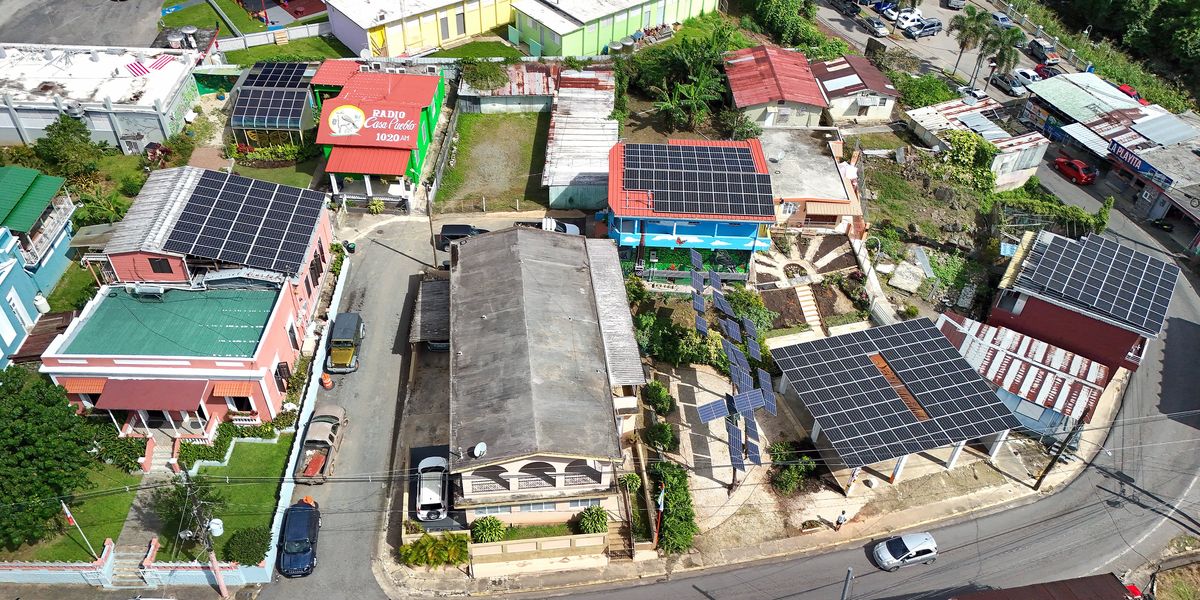The ongoing political turmoil and bottlenecked federal funding have prompted the widespread development of solar-plus-storage systems across the island that are privately financed via leases, loans, or Power Purchase Agreements (PPAs). Each month, the island sees around 4,000 solar-plus-battery storage systems come online, Rúa-Jovet says. These installations are connected to the grid but can also operate during blackouts.
At the end of March, LUMA reported over 1.14 gigawatts of grid-connected distributed solar capacity, with an additional 2.34 gigawatt-hours of distributed batteries connected to the grid. Solar power produces over 2 terawatt-hours of electricity each year, which accounts for more than 12.5 percent of Puerto Rico’s total residential electricity consumption annually. The majority of that power is generated from residential solar, and capacity continues to grow as more residents install systems with private financing.
Adjuntas, which has a population of about 18,000, took a more experimental approach. The town’s local environmental nonprofit Casa Pueblo teamed up with researchers from the U.S. Department of Energy’s Oak Ridge National Laboratory in Oak Ridge, Tenn., to develop a way to connect multiple microgrids to exchange power with one another, all without having to be hooked up to Puerto Rico’s grid. The strategy, called grid orchestration, ensures that if power is knocked out on one of the installations, the others aren’t compromised. It’s what kept multiple areas in Adjuntas electrified during April’s island-wide blackout.
During the blackout, Casa Pueblo and the Oak Ridge researchers were completing the testing of the orchestration strategy with three of the five microgrids connected in Adjuntas. These three microgrids are connected to the grid via net metering. The remaining two grids are isolated.
“By decentralizing, it’s creating a more resilient and redundant energy setup,” says Arturo Massol-Deyá, Casa Pueblo’s executive director. “Engineers will say: If you have redundancy, that’s more resilient; that’s better.”
The teams demonstrated trading energy from one microgrid to the other, and vice versa. This kind of transfer enables the system to overcome energy limitations during peak demand times and draw from additional storage at night when the sun is down. Together, the town’s five microgrids provide 228 kilowatts of photovoltaic capacity and an additional 1.2 megawatt-hours of storage, which serve residences and 15 commercial businesses. It’s a small amount of power, but an example of a way for systems to operate independently from the grid.
Watch Trump attempt to steal these away from them.



